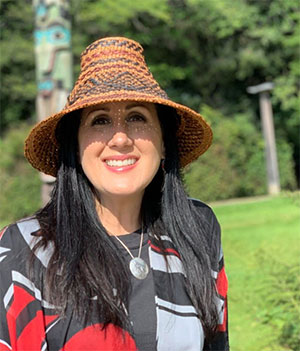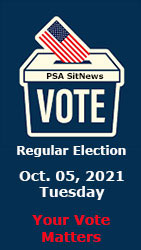







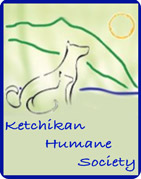



 Contact Contact 
 Webmail
Letters Webmail
Letters
 News Tips News Tips
 Copyright Info Copyright Info
 Archives Archives
Quick News
Search
 Alaska Alaska
 Ketchikan Ketchikan
 SE Alaska SE Alaska
Columns
- Articles
 Dave Kiffer Dave Kiffer
 Money Matters Money Matters
Historical
Ketchikan
 June Allen June Allen
 Dave
Kiffer Dave
Kiffer
 Louise
B. Harrington Louise
B. Harrington
Sports
 Ketchikan Links Ketchikan Links
Public Records
 FAA Accident Reports FAA Accident Reports
 NTSB
Accident Reports NTSB
Accident Reports
 Court Calendar Court Calendar
 Recent Filings & Case Dispositions Recent Filings & Case Dispositions
 Court Records Search Court Records Search
 Sex Offender Reg. Sex Offender Reg.
 Public Notices Public Notices
 Alaska Recall Alerts Alaska Recall Alerts
 Recalls.gov Recalls.gov
 AST Daily Dispatch AST Daily Dispatch
 KTN
Police Reports KTN
Police Reports
 Juneau Police Reports Juneau Police Reports
Weather,
Webcams
 Today's
Forecast Today's
Forecast
 KTN
Weather Data KTN
Weather Data
 AK
Weather Map AK
Weather Map
 AK Weathercams AK Weathercams
 AK Earthquakes AK Earthquakes

|
|

Friday
September 24, 2021
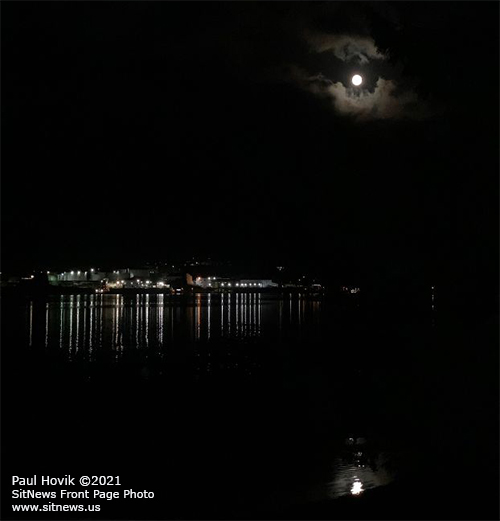
Harvest Moon Over Ketchikan
In 2021, the Northern Hemisphere autumn equinox came on September 22. The full Harvest moon falls two days earlier, on September 20, 2021.
SitNews Front Page Photo by PAUL HOVIK ©2021
To have your photo(s) featured on the front page,
email your photo(s) to editor@sitnews.us |
Ketchikan Regular Election October 05, 2021 - Tuesday
Early & In-Person Absentee Voting Begins September 20, 2021
|
For over two decades, SitNews has provided a section at no cost for all candidates for the local Ketchikan Assembly, School Board, City Council, and Ketchikan Mayor
All candidates are encouraged to participate and provide your future constituents with your candidate's statement to included this required information:
1. Why you are running for office.
2. Experience and education.
3. Identify at least two significant issues and challenges facing our community and your ideas on how these issues could be addressed.
(Please do not just say you will be open to public input. Be specific about the issues and challenges and your specific ideas to address.)
4. Photograph.
5. Email your information in text format and photos (jpg) to editor@sitnews.us
Additional comments are allowed.
Please email your candidate's information for publication by September 18, 2021. Candidate's information will be published as received and will not be edited by the SitNews' editor. (Posted: Sept. 11, 2021 - Invitations to Participate emailed to all candidates on September 11, 2021) |
| Ketchikan Borough Assembly - 3 Year Term (2 Seats Open) |
 |
Darlene d-Svenson
Filed 08/23/21
Response
09/13/21 |
 |
Jason Button
Filed
08/24/21
Response
09/15/21
|
 |
Grant EchoHawk
Filed 08/24/21
Response
09/20/21 |
 |
Carlos Weimer
Filed 08/25/21
Response
09/23/21
|
 |
Jaimie Palmer
Filed 08/25/21
Response
09/17/21
|
|
| Ketchikan School Board - 3 Year Term (3 Seats Open) |
 |
Nicole Anderson
Filed 08/24/21
Response
09/25/21
|
 |
Keenan Sanderson
Filed 08/24/21
Response
09/17/21
|
 |
Tom Heutte
Filed 08/25/21
Response
09/17/21
|
 |
Ali Ginter
Filed 08/25/21
Response
09/12/21
|
 |
Stephen Bradford
Filed 08/25/21
Response
09/22/21
|
|
| Ketchikan City Mayor - 3 Year Term (1 Seat Open) |
 |
Dave Kiffer
Filed 08/02/21
Response
09/13/21
|
|
| Ketchikan City Council - 3 Year Term (2 Seats Open) |
 |
Jai Mahtani
Filed
08/02/21
Response
09/14/21
|
 |
Janalee Gage
Filed 08/06/21
Response
09/13/21
|
 |
Lallette Kistler
Filed 08/09/21
Response
09/14/21
|
 |
Bronson Olson
Filed
Write-In
09/22/21
|
Olson emailed & invited to participate Sept. 23, 2021. |
| |
Printed ballots for inspection for the October 5, 2021 election will be available September 15, 2021.
Ketchikan Borough Sample Ballot
(Also Proposition 1 and Prop 2)
City of Ketchikan Sample Ballot
Early or Absentee-In-Person Voting Begins September 20, 2021. Last day for Early or Absentee In-Person Voting is October 04, 2021.
For Polling Places:
KGB Election Information Click Here
City of Ketchikan Election Info Click Here |
|
Redistricting: Alaska Redistricting Board Approves Proposed Plans; Public Meetings Scheduled For Feedback Posted & Edited By MARY KAUFFMAN - The Alaska Redistricting Board adopted six proposed redistricting plans Monday which will be the basis of public meetings across Alaska. The Board-drafted plans, v.3 and v.4 adopted September 20, 2021 replace Board Composite Plans v.1 and v.2, which were previously approved by the Board on September 9, 2021.
"I was pleased that the Board came together [Monday] to bring six proposed redistricting plans forward for Alaskans to consider,” said Board Chair John Binkley. “We will now be traveling around the state to learn which plan best reflects Alaskans’ desire for their legislative districts.
Binkley said, " The Alaska Redistricting Board will now start a public meeting tour, seeking feedback from Alaskans on all proposed plans before adoption of the final plan is required by the Alaska Constitution by November 10, 2021.
“We were pleased to hear from Alaskans from every region of the state and replace our initial maps with new and improved versions three and four, which better reflect the socio-economic integration characteristics of each region,” said Board Member Nicole Borromeo.
Borromeo said, “We look forward to hearing feedback from Alaskans on our new draft maps, as well as the four adopted third-party draft maps, as we present them in public meetings in communities across the state.” - More...
Friday AM - September 24, 2021
Alaska: Murkowski introduces bill providing permanant exemption from PVSA for Alaska cruises Posted & Edited By MARY KAUFFMAN - U.S. Senator Lisa Murkowski (R-AK) on Wednesday introduced new legislation, the Cruising for Alaska’s Workforce Act, to provide a permanent exemption from the Passenger Vessel Services Act (PVSA) for cruises transporting passengers to Alaska from the U.S. In an effort to support U.S. shipbuilders and Alaska’s tourism industry, this waiver will end once there is a U.S.-built ship that carries more than 1,000 passengers.
Senator Murkowski previously introduced the Alaska Tourism Restoration Act (ATRA), signed into law on May 24, 2021, which provided a temporary exemption from the PVSA for cruises traveling between the State of Washington and Alaska in order to get around Canada’s restrictions preventing U.S. cruises from docking at their ports.
“A few months ago, we were able to move the Alaska Tourism Restoration Act over the finish line, providing a temporary legislative fix to the PVSA to help bring tourism back to a number of Alaskan communities that rely on the hundreds of thousands of visitors who come to the state by way of cruise ships. While the PVSA still serves its purpose in the Lower 48, it unintentionally put many Alaskan businesses at the mercy of the Canadian government when Canada closed its borders, including ports. The inability for cruises to travel to Alaska nearly wiped out our economies in Southeast - communities like Skagway for example saw an 80 percent drop in business revenues,” said Senator Murkowski.
“While the PVSA is well-intentioned to protect American jobs and businesses, it had the unintended consequence of putting Alaskan businesses at the mercy of the Canadian government. It nearly wiped out Southeast Alaskan economies as we saw business after business ready to welcome visitors, but unable to because Canadians would not respond to our requests to allow foreign stops at their ports to meet the requirement of PVSA. We cannot let that happen again,” said Senator Murkowski.
Murkowski said, “I’m proud to introduce new legislation to provide a permanent exemption for cruises between any U.S. port and Alaska from the PVSA. My new bill guarantees the PVSA will not intrude on Alaska’s tourism economy, while also ensuring foreign-built ships do not compete with U.S.-built ships. This legislation is good news for every Alaskan whose livelihood relies on tourism.”
This new legislation will permanently exempt Alaskan cruises carrying more than 1,000 passengers from the PVSA. This legislation will create jobs for American merchant mariners in the cruise industry, and to ensure foreign-built cruise ships do not compete with U.S.-built ships, this waiver will end once there is a U.S.-built cruise ship that carries more than 1,000 passengers. We do not want to compete with U.S. shipbuilders - that’s why this legislation ends once there is an American market. Bottom line, we need to reform the PVSA so that Alaskans’ ability to engage in commerce isn’t derailed by the government of another country.”
In 2019, Alaska hosted over 1.3 million visitors by way of cruise ships. That number came to a halt in 2020 due to the COVID-19 pandemic and associated mandates, decimating Alaskan small businesses and Alaska’s economy overall. For example, according to a Southeast Conference June 2020 report, Skagway business revenue was down 80 percent compared to the same period in 2019. The tourism industry in Alaska typically generates more than $214 million in state and municipal revenue, more than $1.4 billion in payroll, and $2.2 billion in visitor spending—all of which saw a significant decline during the coronavirus pandemic.
Recently, Alaska Congressman Don Young (R-AK) published an op-ed in the Vancouver Sun detailing his recently introduced legislation (Tribal Tourism Sovereignty Act) to allow ports or land owned by Tribes or Alaska Native Corporations to satisfy the Passenger Vessel Services Act’s (PVSA) foreign stop requirement. Under the PVSA, large foreign-flagged passenger vessels are not permitted to make consecutive U.S. port stops without a foreign stop in between.
This year, Alaska’s 2021 cruse season was put at risk by Canada’s decision to close its ports, effectively crushing a major component of Alaska’s economy. The Alaska Congressional Delegation successfully passed H.R. 1318, the Alaska Tourism Restoration Act, to save a portion of the cruise season.
Following enactment by President Biden, cruises this year were exempted from stopping in Canada on voyages between Seattle and Alaska. In his op-ed, Young wrote, "My proposal is simple yet powerful: Large foreign-flagged passenger vessels that call on ports or places in the United States owned by Tribes or Alaska Native Corporations would be compliant with the PVSA’s foreign-stop requirement."
"In Alaska, this would mean that voyages would no longer have to stop in or originate in Canada. Cruises could start and end in Alaska, maximizing their time in our state and opening new economic development opportunity for Alaskans. My bill also benefits tribal communities in the lower 48 states by creating port development opportunities for tribes in Washington State, Oregon, the Great Lakes, and the Northeast," wrote Young.
Further he wrote, "There are many potential locations for this arrangement to flourish: the Aleutians on Adak, Metlakatla, or even Port Clarence in the Bering Sea. Additionally, my bill includes strong provisions to protect native sovereignty and puts native communities in control of agreements with cruise lines."
“Upon the expiration of the Alaska Tourism Restoration Act, Canada will once again have de facto veto authority over Alaska’s cruise industry. As a result, we must reform the PVSA to protect the sovereignty of our tourism economy,” Young wrote. - More...
Friday AM - September 24, 2021 |
|
Fish Factor: Good news for crab in Gulf of Alaska By LAINE WELCH - Unlike in the Bering Sea, there’s good news for crab in the Gulf of Alaska.
A huge cohort of Tanner crab that biologists have been tracking in the Westward region for three years showed up again in this summer’s survey.
“We were optimistic and we did find them again. Pretty much all the way across the board from Kodiak all the way out to False Pass we found those crab and in good quantity,” said Nat Nichols, area manager for the Alaska Dept. of Fish and Game at Kodiak.
The bairdi Tanners are the larger cousins of snow crab (opilio Tanners) found in the Bering Sea.
“The very, very rough preliminary numbers look like we've at least hit the minimum abundance thresholds in all three areas of Kodiak, Chignik and the South Peninsula. So we're excited about that.”
The last Tanner opener was in 2020 for 400,000 pounds, the minimum abundance number for a district to have a fishery. A fleet of 49 boats participated in that fishery and averaged over $4 per pound for the harvestable male crabs that typically weigh between 2-4 pounds each.
“A Tanner crab is getting to be legal sized around age four or five, and then they start to die of natural causes or age out of the population by around seven or eight,” Nichols explained. “Once they start to become legal, we can expect them to hang around for potentially three years, and there'll be more small crab behind them so you can kind of think of this as the front edge.”
The new cohort, Nichols said, is one of the largest ever. It appears to be made up of two big year classes with a broad range of sizes that could support several years of fishing.
“In 2019 the estimate was 223 million and then in 2020 it was down to 108 million. Every year, that number gets smaller, because there's pretty high mortality on smaller crab. Anybody who's cut open a halibut stomach knows that,” Nichols said.“And a lot of those are females so they won’t be in the fishery. But the male crab are getting bigger and approaching legal size. So even though you're seeing estimates go down quite a bit, it's still going to turn into a pretty good number of legal grab in the water.”
Several more regulatory calculations must still be met as managers move their way through the survey data before a 2022 Tanner fishery gets a green light.
“But based on meeting the minimal abundance thresholds it at least opens the door for a conversation about six different fisheries. And that doesn't even include the Semedi Islands overlap section of the Kodiak district which would be open also. Under that scenario, that would be seven different sections open.”
A Tanner announcement will be made in early November for the fisheries which open in mid-January.
By the way, Tanner crab is always spelled with a capitol “T” because it is named after discoverer Zera Luther Tanner, commander of the research vessel Albatross which explored Alaska waters in the late 1800s. - More..
Friday AM - September 24, 2021
|
|
Ketchikan: PITAAS scholar Melissa Brooks-Johnson, named Interim Superintendent for the Ketchikan Gateway Borough School District - Melissa Brooks-Johnson has been appointed as Interim Superintendent for the Ketchikan Gateway Borough School District. She earned her Superintendent Endorsement in 2017 from the University of Alaska Southeast (UAS). She was also the recipient of a scholarship from the PITAAS program -- Preparing Indigenous Teachers and Administrators for Alaska’s Schools.
“Melissa is an excellent example highlighting the value of higher education in one’s career, as she was well-positioned to step into her new role as Ketchikan Gateway Borough School District’s Interim Superintendent quickly when the need arose late last spring, noted Dr. Mary Wegner, program director for superintendent and educational leadership, “Currently, 36% of the superintendents in Alaska are in the process of earning or have earned their Superintendent Endorsement from UAS."
“Superintendent Melissa Johnson steps into a key leadership position and will no doubt inspire her teachers, support staff, and students with her sense of purpose, inspiration, and determination in support of her community. I am pleased and proud that she chose UAS and the PITAAS Program.” said Ronalda Cadiente Brown, the Associate Vice Chancellor for Alaska Native Programs, and Director of the PITAAS Program. - More...
Friday AM - September 24, 2021
|

Kenneth “Kelly” White
Photo Courtesy
Rasmuson Foundation |
Ketchikan: Cape Fox Employee Wins Prestigious 2021 Rasmuson Foundation Fellowship Award - Cape Fox employee and Shareholder Kenneth “Kelly” White, the Cape Fox Corporation's In-Residence Artist, was recently name one of ten receiving a prestigious Fellowship Award from the Rasmuson Foundation. Fellowships are provided to mid-career and mature artists, and White will receive $18,000 to use for a year-long creative development period.
White is of Tlingit descent and a Northwest Coast artist who is Teikweidí Taanta Kwaan. White is Neix.adi Yutki-Saanya Kwaan, a child of Neix.adi and grandchild of Stikine, Naanyaa.aayi. In 2019, Kelly began his position with CFC as the Artist In-Residence. He has worked on several projects, including panels, logos and requested art pieces often showcased in CFC commercial business locations.
White’s Fellowship Award will allow him to invest in equipment enabling him to share stories of his experiences practicing traditional arts such as storytelling, dancing, carving, and drawing. Kelly will make videos of carvings and create 3D models to use for reference and educational purposes. While Kelly has had a long association with CFC, he has worked hard his entire career to keep the Tlingit culture alive through his art. This fellowship will allow him to expand his knowledge and pieces in new and creative ways.
Quoting a news release, "CFC is proud of Kelly with what he has accomplished and looks forward to what Kelly will create regarding his Fellowship Award. Kelly is an artist who believes strongly in keeping the Tlingit culture alive and he is doing that through his art."
Cape Fox Corporation (CFC) and the Tlingit Alaska Natives of Saxman, Alaska have strong historical connections. CFC strongly believes in keeping the Tlingit culture alive and one way is through art. Tlingit art is special with unique colors and symbols, often with elements of spirituality, and functionality. - More...
Friday
AM - September 24, 2021 |
|
Ketchikan: PeaceHealth needs your help! - PeaceHealth hospitals, clinics, doctors and nurses in Ketchikan and Prince of Wales need the community’s help to make sure they can continue to safely provide care – not only to those suffering from severe illness from COVID-19 but to those requiring care for the full range of illness and injuries that its doctors and nurses typically treat.
“We can’t do this alone,” said Peter Rice, MD, medical director for PeaceHealth Ketchikan. “We are dependent on our community members to do what is right, which is to help protect each other from getting the virus and by doing that, help the hospital and clinics care for people in need of our services.”
Rice noted that while one of the approved COVID-19 vaccines is the BEST way to avoid serious illness and hospitalization, simple precautions can go a long way to keep you and your family healthy: - More...
Friday AM - September 24, 2021
Alaska: Hundreds of Health Care Workers Coming to Alaska as State Provides Support to Hospitals and Health Care Providers - Alaska Governor Mike Dunleavy announced this week that hundreds of medical personnel are coming to Alaska to assist the State’s health care facilities. Nearly 300 registered nurses and more than 100 certified nursing assistants or patient care technicians are among the health care workers expected to arrive soon in Alaska under an $87 million contract between the State of Alaska and the federal General Services Administration. The incoming health care workers, the first of whom are expected to arrive in Alaska next week, are part of a comprehensive support plan for Alaska’s health care system, finalized this week by the Dunleavy Administration for medical facilities strained by an influx of COVID-19 patients.
“We asked Alaskans for the last year and a half to work together on the challenge posed by COVID-19,” said Governor Dunleavy. “Our hospitals need help with staffing, supplies, and Alaskans to do their part. Today’s announcement brings qualified health professionals when we need it and provides Alaskans with the tools we need to manage through this difficult time.”
The administration’s plan includes: - More...
Friday AM - September 24, 2021
|
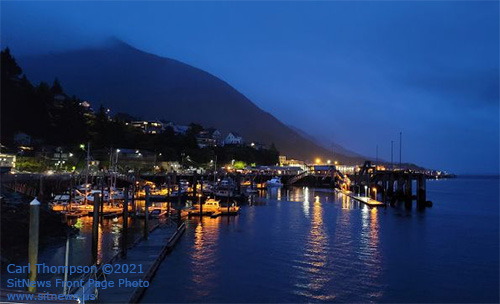
Night Lights of Ketchikan
SitNews Front Page Photo by CARL THOMPSON ©2021
To have your photo(s) featured on the front page,
email your photo(s) to editor@sitnews.us |
|
Alaska: Annual Crime in Alaska Report Shows 18.5% Decrease in Crime - The Alaska Department of Public Safety has published the 2020 Crime in Alaska report , the annual report on instances of crime in Alaska reported a decrease in Alaska's overall crime rate by 18.5%. This also reflects the lowest total number of reported offenses since 1975 and continues the downward trend in Alaska crime that started in 2018. While Alaska's reported violent crime rate decreased by 3.7% last year, the crime rate for rape increased slightly from 2019 to 2020. Alaska's property crime rate decreased 22.9% in 2020, and the total number of reported property offenses were at their lowest level since 1974.
The Uniform Crime Reporting (UCR) Program is a nationwide effort by federal, state, city, county, and tribal law enforcement agencies to report data on crimes reported in their jurisdiction. The report is a resource for measuring the trend and distribution of crime in Alaska. Under Alaska law, law enforcement agencies in Alaska are required to submit UCR data to the State of Alaska. In 2020, 32 agencies reported crime data to DPS. These agencies represent 99.5% of the state’s population.
"The overall decrease in Alaska's crime rate is encouraging and shows real progress in our efforts to make Alaska a safe place to live and raise a family. However, we must continue to double-down on our efforts to eliminate the scourge of sexual assault and domestic violence in our state and invest in meaningful public safety in rural Alaska," said Alaska Department of Public Safety Commissioner James Cockrell.
Cockrell said, "Every Alaskan, regardless of their address, gender, or race, deserves a life that is free of crime, and the Department of Public Safety is committed to doing our part to meet that goal."
Alaska Governor Mike Dunleavy issued a prepared statement following the release of the report.
"Public safety in Alaska has been the top priority for my administration since the first day I took office. I immediately began work to repeal and replace SB 91 with crime legislation that makes sense and protects Alaskans,” said Governor Mike Dunleavy.
Dunleavy said, “And while the decline in crime rate numbers is a testament to the great work law enforcement and partners across the state are doing, we will not stop until sexual assaults and domestic violence are no longer a problem in our communities. I will continue with my plan to remove sexual predators and violent offenders from the streets in Alaska by immediately collecting 100% of the DNA owed in all authorized cases going forward and by collecting DNA from another 20,022 offenders who owe the State a sample of their DNA under State law through the Department of Public Safety and the Department of Corrections. My directive remains to reduce the sexual assault kit testing and processing times to 90 days and increasing funds to add more staff and resources to achieve that goal.” - More...
Friday AM - September 24, 2021
|
|
National: Why America has a debt ceiling: 5 questions answered By STEVEN PRESSMAN - Republicans and Democrats are again waging a battle of wills over the U.S. debt ceiling, which is a statutory limit on how much the government can borrow to pay its bills. Senate Minority Leader Mitch McConnell says no member of his party will support a bill lifting or suspending the debt limit – even though he says he wants to see it raised – and Democrats are reluctant to do it on their own. At the moment, Democrats hope to do it as part of a must-pass spending bill.
Congress suspended the debt ceiling in 2019 for two years, ending July 31, 2021. Since then, the U.S. Treasury Department has taken emergency measures that allow it to keep borrowing without an increase in the limit. Treasury Secretary Janet Yellen said that those options will run out in October and that if the U.S. doesn’t allow more borrowing it faces “catastrophe” – either drastic across-the-board spending cuts or the prospect of an unprecedented default.
Economist Steve Pressman explains why we have a ceiling – and why he thinks it’s time to abolish it.
1. What is the debt ceiling?
Like the rest of us, governments must borrow when they spend more money than they receive. They do so by issuing bonds, which are effectively IOUs with a promise to repay the money and make regular interest payments. Government debt is the total sum of all this borrowed money.
The debt ceiling, which Congress established a century ago, is the maximum amount the government can borrow. It’s a limit on the national debt.
2. What’s the national debt?
Currently, U.S. government debt is just under $28.5 trillion, about 29% more than the value of all goods and services that will be produced in the U.S. economy this year.
Around one-quarter of this money the government actually owes itself. The Social Security Administration has accumulated a surplus and invests the extra money, currently $2.9 trillion, in government bonds. The Federal Reserve holds over $5 trillion in U.S. Treasuries.
The rest is public debt. As of May 2021 foreign countries, companies and individuals owned $7.5 trillion of U.S. government debt. Japan and China are the largest holders, with over $1 trillion each. The rest is owed to U.S. citizens and businesses, as well as state and local governments. - More...
Friday AM - February 24, 2021
|
DAVE KIFFER: The Key West of Alaska - Ketchikan: We've all seen that "map" that superimposes Alaska over the Lower 48. Ketchikan is near Savannah, Georgia. Point Barrow is somewhere in way northern Minnesota. The Aleutian Islands stretch all the way to California.
It reminds us, and others, just how big Alaska is. That it is NOT some little place down next to Hawaii, like it is shown on most US maps.
The maps showing Alaska in the little box in the lower left-hand corner have always royally cheesed me off. We come off about the same size as the big island of Hawaii. No wonder Outsiders have the way wrong impression of how big Alaska is ("Can I drive from Ketchikan to Denali and back in one day?").
You even get some pretty strange conclusions. We've all had someone ask us what it is like to live with igloos and polar bears. But I once had someone insist to me that Alaska was a "pretty warm place." - More...
Friday AM - September 24, 2021
MONEY MATTERS:QUIZ: HOW SKILLED ARE YOU AT MONEY? By MARY LYNNE DAHL , Certified Financial Planner ™
Retired
- Your skill at managing money relies largely on your brain’s ability to get information and make rational decisions. The problem, however, is that our brains are not rational. Instead, our brains are emotional, but do have the power to inform, which we assume makes us rational. That assumption is often false. It can and does get in the way of us actually making those rational decisions, especially about money, and this is how we get into trouble with money.
Israeli psychologists Daniel Kahneman and Amos Tversky are recognized in the world of finance as the first professionals in the field of behavioral finance to speak and teach in public about how irrational our brains are on the subject of money. They developed a body of research that since the mid 1970’s has focused on why we make bad financial decisions and how to recognize them, in hopes of correcting them. Below is a quiz you can take to get a better idea of your own money style and how you can avoid making the most common investment mistakes. - More...
Friday AM - September 24, 2021
FINANCIAL FOCUS: Are your loved ones prepared to be caregivers? Provided By BEN EDWARDS, AAMS® - Once you’re retired and your children are grown, they are likely “off the books,” as far as your financial responsibility for them is concerned. Yet, you’re probably still prepared to do anything to help them – but are they ready to take care of you if the need arises?
Consider this: Almost half of retirees say that the ideal role in retirement is providing support to family and other loved ones, according to the Edward Jones/Age Wave study titled Four Pillars of the New Retirement: What a Difference a Year Makes – and a slightly earlier version of the same study found that 72% of retirees say one of their biggest fears is becoming a burden on their family members.
- More...
Friday AM - September 24, 2021
|

Political Cartoon: U.S. debt default
by John Darkow ©2021, Columbia Missourian
Distributed to subscribers by CagleCartoons.com

Political Cartoon: Debt Ceiling Bomb
by Dave Whamond ©2021, Canada, PoliticalCartoons.com
Distributed to subscribers by CagleCartoons.com |
An Open Letter to Mary Kauffman by Dan Bockhorst
- Mary, thanks for your years of valued service to Ketchikan as editor, publisher, and webmaster of SitNews.
For nearly a quarter century, SitNews has been the premier local forum for those who wish to share viewpoints about topics of interest to your readers. Prominently stated in your invitation for commentary is a 1949 declaration by U.S. Supreme Court Justice William O. Douglas: “The function of free speech under our system of government is to invite dispute. It may indeed best serve its high purpose when it induces a condition of unrest, creates dissatisfaction with conditions as they are, or even stirs people to anger. Speech is often provocative and challenging. It may strike at prejudices and preconceptions that have profound unsettling effects as it pressures for the acceptance of an idea.”
SitNews provides ready access to weather forecasts, public records, tide charts, public meetings, federal legislation, public safety information, balanced news, local columnists (such as Dave Kiffer’s entertaining essays and Mary Lynne Dahl’s wise counsel on personal finance), and more.
Those aspiring for local public office are given a platform each year to express their views and qualifications. Readers can also learn which candidates have submitted statements by the timeline you set. (I find it telling that 40% of Borough assembly candidates and 40% of school board candidates didn’t submit statements by the deadline.) Candidate statements remain prominently available on SitNews for voters to review during the entire election season. - More...
Sunday PM - September 26, 2021
 |
Alaska Will Greatly Benefit from Historic Infrastructure Bill By U.S. Senator Lisa Murkowski
- everal years ago, the American Society of Civil Engineers gave Alaska’s infrastructure a C-minus grade. Their report reiterated what too many Alaskans know and face every day: our still-young state is deficient in water and wastewater, ports and harbors, marine transportation, energy and power infrastructure, and more. Even in our highest-graded areas – like roads and airports – Alaska still has plenty of room for improvement.
One of the best ways to address these deficiencies is by bringing timely federal funding and assistance back home. That’s where I have placed my focus, and an historic infrastructure bill that will deliver massive benefits to our state is now within reach.
For the past several months, I worked with nine other Senators to reach bipartisan consensus on traditional “core” infrastructure. Our bill will provide an additional $550 billion for these priorities over the next five years without raising taxes. It will increase our standard of living, create jobs and opportunities, and limit the inflation that threatens families and businesses.
I was able to add many provisions to our bipartisan bill that are targeted to help Alaska.
Alaska will receive billions of dollars to build, maintain, and upgrade our roads, railways, and address the more than 140 structurally deficient bridges in our state. To help meet some of our most pressing challenges, we create a set-aside for projects in rural Alaska. - More...
Sunday PM - September 26, 2021
Charting a course for the next century of maritime policy
By U.S. Congressman Don Young
- When the chapter about the COVID-19 pandemic is written in Alaska’s history, it will be remembered as a time of resilience, shared sacrifice, and the never-give-up spirit that lives within all Alaskans. With new tools for economic development and prosperity, I believe Alaska can come back stronger than ever before.
COVID-19 exposed critical vulnerabilities in Alaska’s economy, which required emergency action to save a portion of the 2021 summer cruise season. The return of cruise ships to southeast Alaska brought much-needed economic activity to the region. But it also served as a reminder that, in the future, we cannot allow such a vital portion of our economy to be held hostage by a foreign country, in this case, Canada.
Make no mistake about it, without the passage of the Alaskan Tourism Restoration Act, Canada’s port closures would have doomed the 2021 cruise season despite our ability to mitigate COVID-19 on large cruise vessels.
To add insult to injury, Canada’s power to cancel Alaska’s 2021 cruise season was only possible because of a U.S. law known as the Passenger Vessels Services Act (PVSA). In short, the PVSA, enacted in 1886, does not allow foreign-flagged passenger vessels to make consecutive U.S. port stops without stopping at a foreign port in between.
Upon the expiration of the Alaska Tourism Restoration Act, Canada will once again have de facto veto authority over Alaska’s cruise industry. As a result, we must reform the PVSA to protect the sovereignty of our tourism economy.
This summer, I introduced the Tribal Tourism Sovereignty Act, which will do exactly that.
My proposal is simple yet powerful: Large foreign-flagged passenger vessels that call on ports or places in the United States owned by Tribes or Alaska Native Corporations would be compliant with the PVSA’s foreign-stop requirement.
In Alaska, this would mean that voyages would no longer have to stop in or originate in Canada. Cruises could start and end in Alaska, maximizing their time in our state and opening new economic development opportunity for Alaskans. My bill also benefits tribal communities in the lower 48 states by creating port development opportunities for tribes in Washington State, Oregon, the Great Lakes, and the Northeast.
As Alaska celebrates the 50th anniversary of the Alaska Native Claims Settlement Act this year, we need additional tools to assist Alaska’s native communities in attracting investment and pursuing economic development.
Southeast Alaska has already witnessed strong public and private investment in areas with cruise-related tourism such as Sitka and Icy Strait Point.
My bill would allow tribal lands and communities to benefit from this type of investment and capture additional economic activity within Alaska.
There are many potential locations for this arrangement to flourish: the Aleutians on Adak, Metlakatla, or even Port Clarence in the Bering Sea. Additionally, my bill includes strong provisions to protect native sovereignty and puts native communities in control of agreements with cruise lines.
The Senate-passed bipartisan Infrastructure Investment and Jobs Act will hopefully be considered in the House this month and enacted into law. Thanks to the good work of my Senate colleagues, Alaska will receive a significant windfall to modernize port and waterway infrastructure. Passage of my bill will help these communities attract public and private investment that will benefit Alaska native communities year-round. - More...
Friday AM - September 24, 2021
|
Articles &
photographs that appear in SitNews may be protected by copyright
and may not be reprinted or redistributed without written permission
from and payment of required fees to the proper sources.
E-mail your news &
photos to editor@sitnews.us
Photographers choosing to submit photographs for publication to SitNews are in doing so, granting their permission for publication and for archiving. SitNews does not sell photographs. All requests for purchasing a photograph will be emailed to the photographer.
|
|

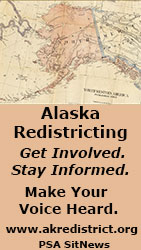













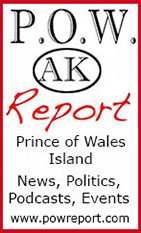

|
|

![]() Contact
Contact ![]()
![]() Webmail
Letters
Webmail
Letters![]()
![]() News Tips
News Tips![]()
![]() Copyright Info
Copyright Info![]() Archives
Archives![]() Alaska
Alaska![]() Ketchikan
Ketchikan![]() SE Alaska
SE Alaska![]() Dave Kiffer
Dave Kiffer![]() Money Matters
Money Matters ![]() June Allen
June Allen![]() Dave
Kiffer
Dave
Kiffer![]() Louise
B. Harrington
Louise
B. Harrington ![]() Ketchikan Links
Ketchikan Links![]() FAA Accident Reports
FAA Accident Reports ![]() NTSB
Accident Reports
NTSB
Accident Reports![]() Court Calendar
Court Calendar![]() Recent Filings & Case Dispositions
Recent Filings & Case Dispositions ![]() Court Records Search
Court Records Search![]() Sex Offender Reg.
Sex Offender Reg.![]() Public Notices
Public Notices![]() Alaska Recall Alerts
Alaska Recall Alerts![]() Recalls.gov
Recalls.gov![]() AST Daily Dispatch
AST Daily Dispatch![]() KTN
Police Reports
KTN
Police Reports![]() Juneau Police Reports
Juneau Police Reports ![]() Today's
Forecast
Today's
Forecast![]() KTN
Weather Data
KTN
Weather Data![]() AK
Weather Map
AK
Weather Map![]() AK Weathercams
AK Weathercams![]() AK Earthquakes
AK Earthquakes





























